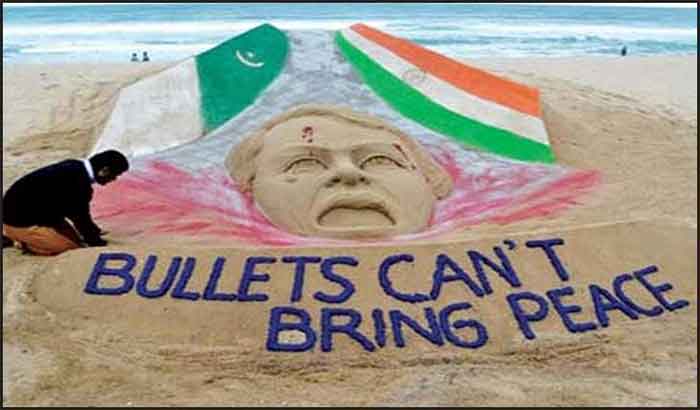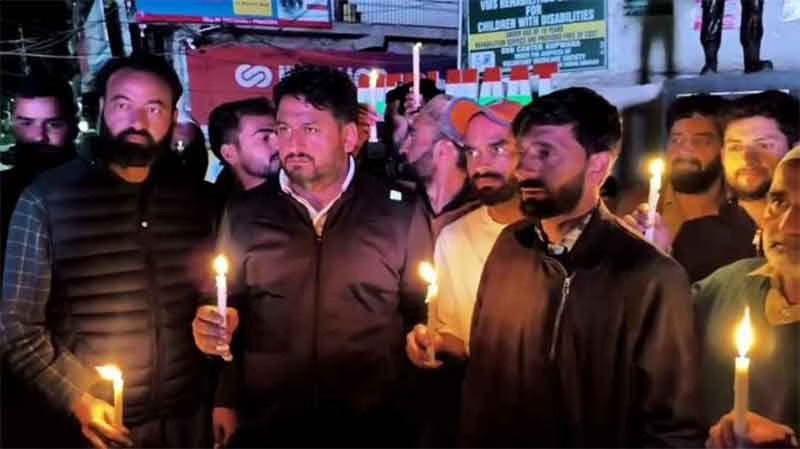
The escalations and tensions between India and Pakistan are once again at the forefront after the recent terrorist attack in Pahalgam. The security lapses and tourist regulations have been under scrutiny since the attack took the lives of 26 civilians in the name of their religion. Pakistan army general Asim Munir’s speech, which took place a few weeks before the attacks, primarily emphasised the two-nation theory, evoking the Pakistani Islamic spirit. Even though India didn’t retaliate at first and went on to pressurise Pakistan with diplomatic efforts, it was met with hostile responses. Several escalations and borderline firings occurred on both sides, elevating the tension across borders. The Indian government launched Operation Sindhur on May 7, conducting airstrikes on the region of Pakistan and PoK.
But while drones and warplanes fight on the battlefield, another war is raging in the digital ecosystem: the war of narratives. ‘The Information Warfare ‘.It doesn’t surprise me much to see people blatantly calling for war and revenge because the media ecosystem has turned this warfare into a jingoistic adrenaline entertainment show. The mainstream news channels are making warfare animations and graphics frequently played on every other program. Anchors and newsreaders present news against the backdrop of battlefields and bombing background scores. The viewers are made to watch it as a video game rather than an actual conflict that peels human bodies into blood and bones. The anchors are screaming and calling for a toast when India fires a missile as if it were a grand, victorious spectacle. Prime time debates are running on ultra nationalists’ sentiments, even forcing the debaters to chant Vandemataram, interrogating their patriotism. Propaganda, fake news, misinformations/disinformations are widely spread within a second with no proper fact-checking. On Aaj Tak, the senior executive editor read out that the brigade in Kashmir was purportedly under a fidayeen (suicide ) attack. She didn’t care to offer the sources. Later, PIB denied this claim, confirming it as fake news. Republic’s Arnam Goswami and Aaj Tak’s Kashyap reported several times that India has launched a “massive “ attack on Islamabad and Lahore. But none of the anchors specified the “massive” nature of attacks and destruction, and no official confirmation of these developments was reported. Zee News published a story claiming that “reports” had emerged that Pakistani chief Asif Munir had been taken into custody by Pakistani authorities. Times now even tweeted about a military coup in their handle.
Such performative nationalism by mainstream media is only helping to entrench warfare aesthetics and sentiments. The corporate owners of these houses are luxurious and politically powerful to maintain their status quo, while the average indian becomes a pawn of their imperialist corporate greed.
The situation is no better in social media handles. Instagram is flooded with mighty army reels to the background of Bollywood patriotic songs and BGMs. India is depicted as the most strong secular country in the world committed towards its citizens. These liberal nationalists were silent and numb when Dalits and muslims of this country got mob lynched and assaulted . They were not qualified enough to be the ‘citizens’ worth demanding protection and resisting for. But the hues of the political landscape are taking a turn. Nationalist sentiments and love towards fellow citizens have been suddenly evoked by the warfare strategies used by the government and other figures. Gen Z and Gen Alpha are hyping up to buy more arms and fighter jets from Israel and the US. An explosion claimed at Jammu air base was widely spread with a fake video on social media handles, receiving all the endorsements and celebration from the Indian users.
Since the rise of escalations, almost 80000 X accounts have been ordered to be withheld or banned in India by the union government. This includes international news organizations and prominent X users. However, Global government affairs of X tweeted in response, “In most cases, the Indian government has not specified which posts from an account have violated India’s local laws. For a significant number of accounts, we did not receive any evidence or justification to block the accounts.” The X accounts of Maktoob media, Muslim, and the website of Wire. in were also scrutinized and made unavailable to the public.
With the state actively trying to suppress the alternative and dissenting voices, mainstream media becomes the sole source of the public, enabling the government to control the public discourse. Despite its constraints, independent media are trying to carve out a space on the internet with their factual reporting. But the state is censoring and withholding any unheard, anti-war, on-the-border reportage. With both countries accusing each other of escalating the situation, it is the people from Kashmir and along the borders who bear the brunt of the conflict . Their voices and grievances go unheard and don’t make it to the headlines. This censoring of information only adds to nationalist sentiments, further escalating the war as intended by the governments and elites.
In a time of deceit, telling the truth is a revolutionary act – George Orwell
Subscribe to Our Newsletter
Get the latest CounterCurrents updates delivered straight to your inbox.
Jishnu P is a student of Mass Communication and Journalism at Pondicherry University. Their work focuses on media, culture, politics, and cinema, exploring intersections between identities, digital subcultures, and visual storytelling.














































